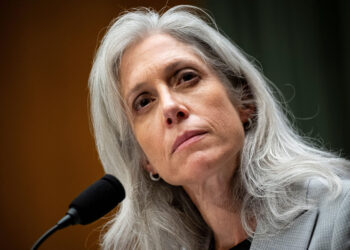Every evening, nurse practitioner (NP) Arnold Facklam arrives at South Georgia Medical Center in Valdosta, Georgia, an hour before his two physician counterparts. As an NP nocturnist, a hospitalist who works overnight, Facklam’s role is to supplement the care provided by the physicians on his team.
He believes he offers a valuable service to his Apogee Physicians hospitalist group, able to spend more time with patients than his doctor colleagues, who carry bigger patient loads, while freeing them up to handle more acute cases.
“Both physicians and NPs do the same tasks, but they divide them up differently,” said Facklam, a hospitalist for 18 years. “Programs of a certain size need to bring in experienced NPs and PAs [physician assistants] that can step into the role and do the tasks to take care of the patients from admissions to discharge, and consultations.”
The classic definition of a hospitalist as a primary care physician is rapidly evolving and the vast majority of hospital medicine groups today use advanced practice providers such as NPs like Facklam, for adult care, according to the Society of Hospital Medicine (SHM)’s latest industry reports.
In most hospitals, NP hospitalists supplement the care their physician counterparts provide, though some small rural hospitals may staff their hospitalist programs entirely with NPs with oversight from a collaborating physician who may not be on duty at the time.
Whether to reduce staffing costs or fill gaps in physician shortage areas, hospitalists are navigating a new landscape to determine the most effective use of NPs in the hospital setting.
Physicians and NPs sharing hospitalist responsibilities are learning how to divide their duties, improve their professional relations, and maintain job satisfaction. Medscape Medical News consulted a handful of hospitalists about the pros and cons of the new staffing models.
Value of NP Hospitalists
Saving money tends to be the biggest advantage of using NPs as hospitalists. The average total compensation for NPs was $135,000 in 2023 or about 60% less than for physician hospitalists, $321,000, according to Medscape’s 2024 compensation reports for physicians and NPs.
Third party private insurers and the Centers for Medicare and Medicaid Services reimburse NPs at 85% of the physician rate, which can help reduce costs.
Among the other benefits of using NPs, they help reduce hospital wait times and because they tend to manage fewer patients than doctors, can spend more time with them, according to research cited by the American Association of Nurse Practitioners.
NPs also fill a void in patient care when hospitals have difficulty attracting physicians or are short-staffed in small or rural hospitals, which tend to be workforce shortage areas.
The Health Resources & Services Administration projects a 22% staff shortage of hospital physicians by 2035. Meanwhile the US Bureau of Labor Statistics consistently reports NPs among the nation’s fastest-growing occupations with a projected 46% growth rate between 2023 and 2033.

In the past few years, Nikhil Sood, MD, has witnessed “a monumental” increase in the number of NPs working alongside him as a hospitalist at Banner Gateway Medical Center in Gilbert, Arizona.
“Utilizing NPs’ expertise can significantly improve care delivery,” said Sood, who treats patients with cancer. NPs also can alleviate physician burnout and enhance patients’ access to care, he said.
“I have partnered with NPs who are outstanding clinicians, meticulous in their work, empathetic in nature, and collaborative. They bring a nursing perspective…often identifying psychosocial or care coordination issues that might otherwise go unnoticed.”
Monique Nugent, MD, MPH, appreciates the specialty care the advanced practice providers on her hospitalist team offer patients. She finds them fully capable of supplementing physician care.
“They work really well with our group. They are a huge support, and they are no less hospitalists than physician hospitalists,” Nugent said about her Advanced Practice Professional (APP) colleagues specializing in cardiac and oncology care at South Shore Hospital in Weymouth, Massachusetts.
“Patients benefit from people with a specialty and who know how to navigate medicine.”
Challenges of NP Hospitalists
Nugent doesn’t believe hospitals should focus solely on the savings just because APPs traditionally earn less than doctors.
“You still need highly qualified people…You have to invest in the person if you want them to do good work,” she said.
Hospitals should provide support such as case management, a safe patient load, and an appropriate level of malpractice insurance, Nugent said.

“If a hospital has 200 patients and there are 20 doctors who take care of 10 patients each, you can’t replace the doctors with APPs and expect them to be comfortable caring for the same number of patients. It’s not simply a math question,” she said.
Staffing calculations also need to include additional administrative requirements for APPs mandated by law and whether states require physician oversight of APPs, Nugent stressed.
More than half of the states give NPs full practice authority to manage patients independently of physicians, but only a handful of states offer full or optimal practice authority for PAs.
“If the system employs PAs and NPs simply because it costs less, they are missing the value they bring to the system,” she said. “How can we support everyone in their practice so we can support the patient? I work with NPs that are really great at their job. Working that way allows us to be great,” Nugent said.
John Nelson, MD, who co-founded the SHM, said hospitals may add NPs or PAs because they can’t recruit doctors in rural areas, or they want to pay less for staffing. But those hospitals may not have carefully considered exactly what the APPs will do, their job description, how they will help doctors see patients, said Nelson, a hospitalist and partner in Nelson Flores Hospital Medicine Consultants.
In some cases, physician hospitalists are partly to blame for the lack of direction APPs receive. The doctors are happy to gain assistance even with menial tasks and without the responsibility of paying salaries, they don’t worry about wasteful spending, Nelson said. “Hospitals are not paying enough attention to realize what is going on.”
Facklam said his hospitalist program clearly defines the job responsibilities of the team. When he starts his duties at 6 PM, he works on admissions and when physicians come in at 7 PM, he provides cross coverage for the hospital and three outlying facilities.
He realizes there has been a rapid increase in APPs as hospitalists created a challenging dynamic for physician hospitalists. Some understand and trust the credentials and capabilities of APPs and allow them the freedom to work effectively. But those who never worked with NPs may not know what to expect and may fear NPs will take their jobs.
“It’s a work in progress,” Facklam said of physician-APP relationships. “I think it takes time for people to realize [APPs] are qualified and capable of serving in the role they are asked to do.”
But Facklam admits he may have been accepted by physicians faster than other NP hospitalists with a quicker adjustment period as a former critical and emergency care nurse and paramedic. “I had experience that led up to it. If it was someone else, they may take a little longer to feel comfortable,” he said.
Hospitals also have to navigate state and federal regulations regarding NPs, including how they can bill state and federal insurance companies and whether they need physician oversight, hospitalists said.
Nearly half of NP and PA work is billed as a combination of both independent and shared services billing with the collaborating or supervising physician, according to SHM’s latest State of Hospital Medicine Report.
Working Effectively as a Hospitalist Team
For NPs to make a smooth transition into hospitalist teams, ensuring quality and safety, requires a strategic and organized environment, Sood said. He added that such integration is particularly important when providing specialty care, such as in cancer hospitals, where there’s a high rate of clinical complexity.
“Patients frequently require intricate decisions regarding chemotherapy side effects, palliative care strategies, or complications from immunotherapy. Practical experience and oncology-specific training are essential,” he said.

He doesn’t think NPs should be expected to operate autonomously in high-acuity or complex settings without sufficient support. “This not only affects patient outcomes but can also create unnecessary pressure on the NPs.”
A team-based approach allows NPs and physicians to regularly consult each other and manage patient care, Sood said. While NPs deserve to be respected and empowered, they also should be “guided by clear practice scopes, mentorship, and structured clinical pathways,” he said.
Nelson believes APPs can contribute professionally to the hospitalist team and find greater job satisfaction if they collaborate with physician hospitalists and receive appropriate training.
In 2024, about 11% of NPs held certifications in acute care, according to AANP. Acute care generally focuses on the type of treatment patients receive in a hospital such as for accidents or emergencies.
APPs also should have a “significant say” about their roles on the team and how they could have the most impact, Nelson said. “They should be part of the conversation if not leading it.”
Roni Robbins is a freelance journalist and former editor for Medscape Business of Medicine. She’s also a freelance health reporter for The Atlanta Journal-Constitution. Her writing has appeared in WebMD, HuffPost, Forbes, New York Daily News, BioPharma Dive, MNN, Adweek, Healthline, and others. She’s also the author of the multi-award-winning novel Hands of Gold: One Man’s Quest to Find the Silver Lining in Misfortune.
Source link : https://www.medscape.com/viewarticle/more-hospitals-turning-nurse-practitioners-heres-why-2025a1000fw3?src=rss
Author :
Publish date : 2025-06-13 11:38:00
Copyright for syndicated content belongs to the linked Source.













